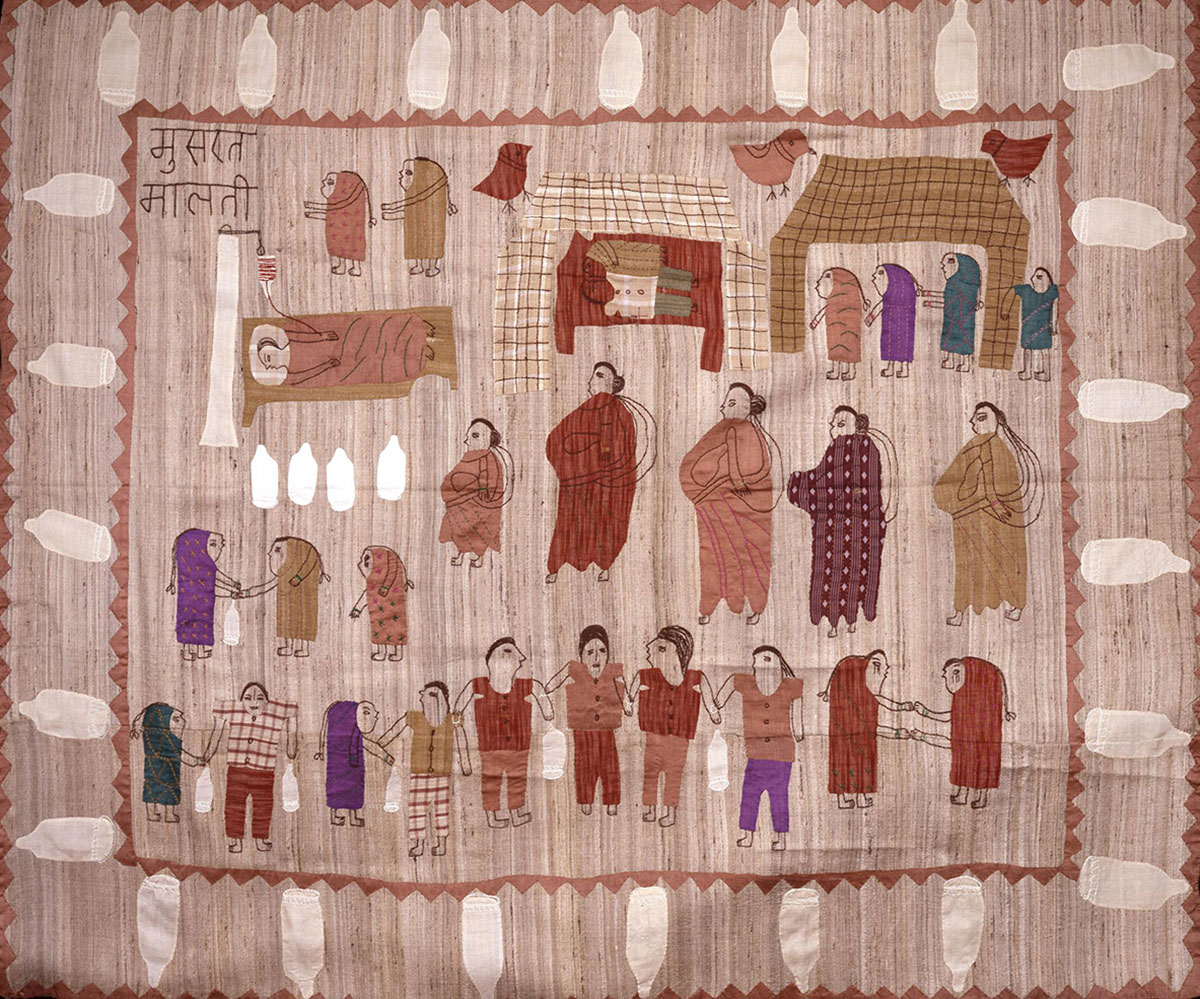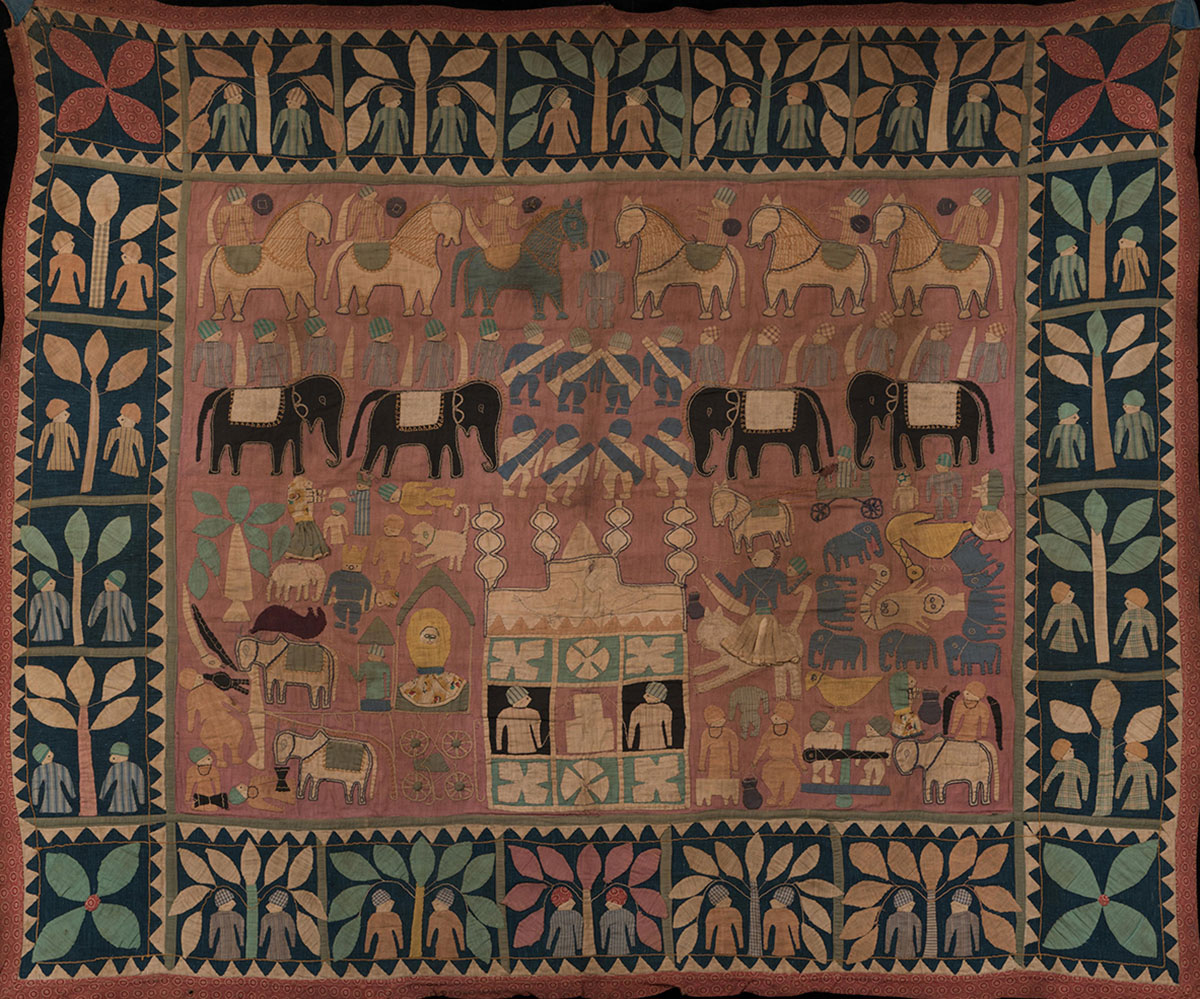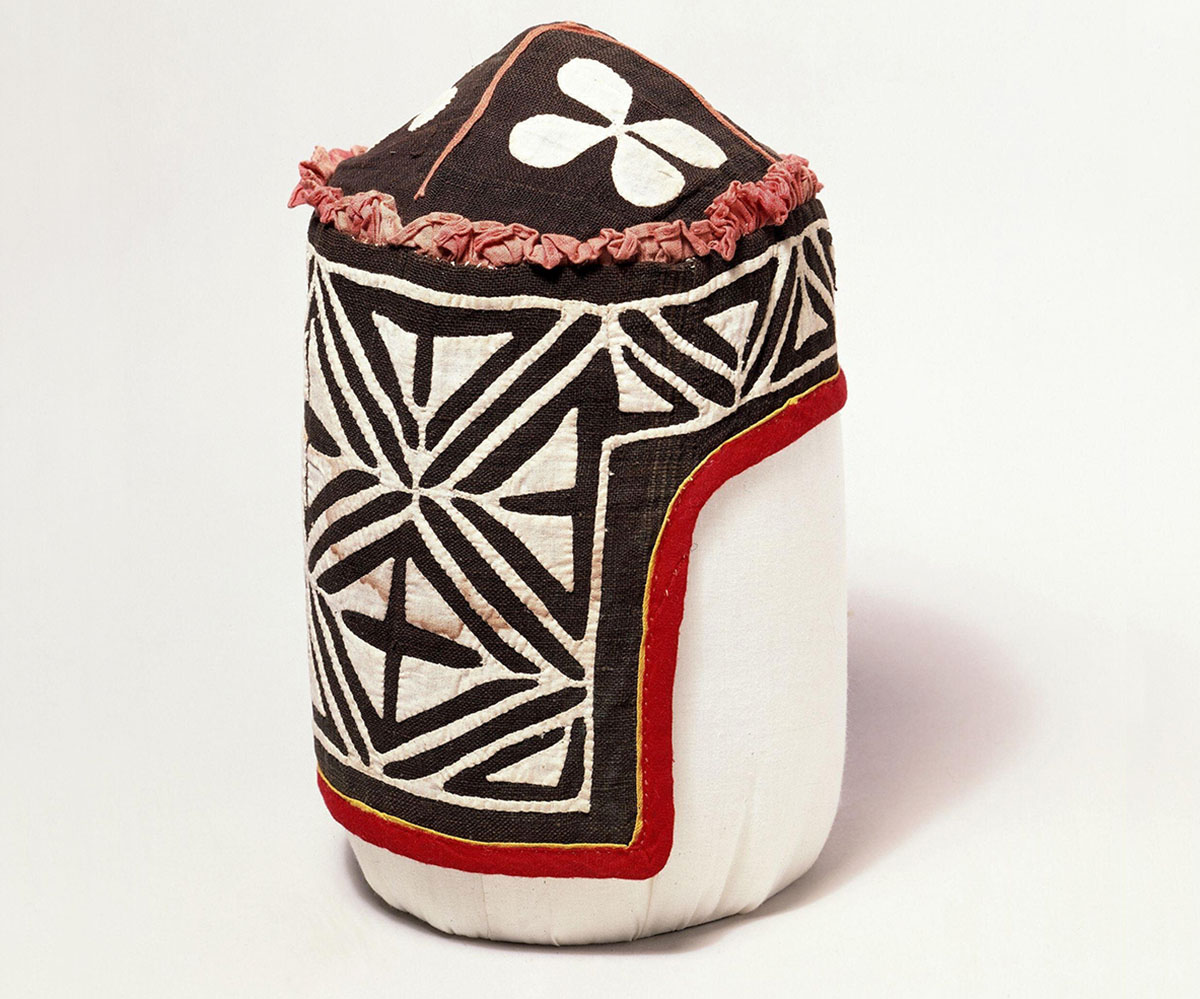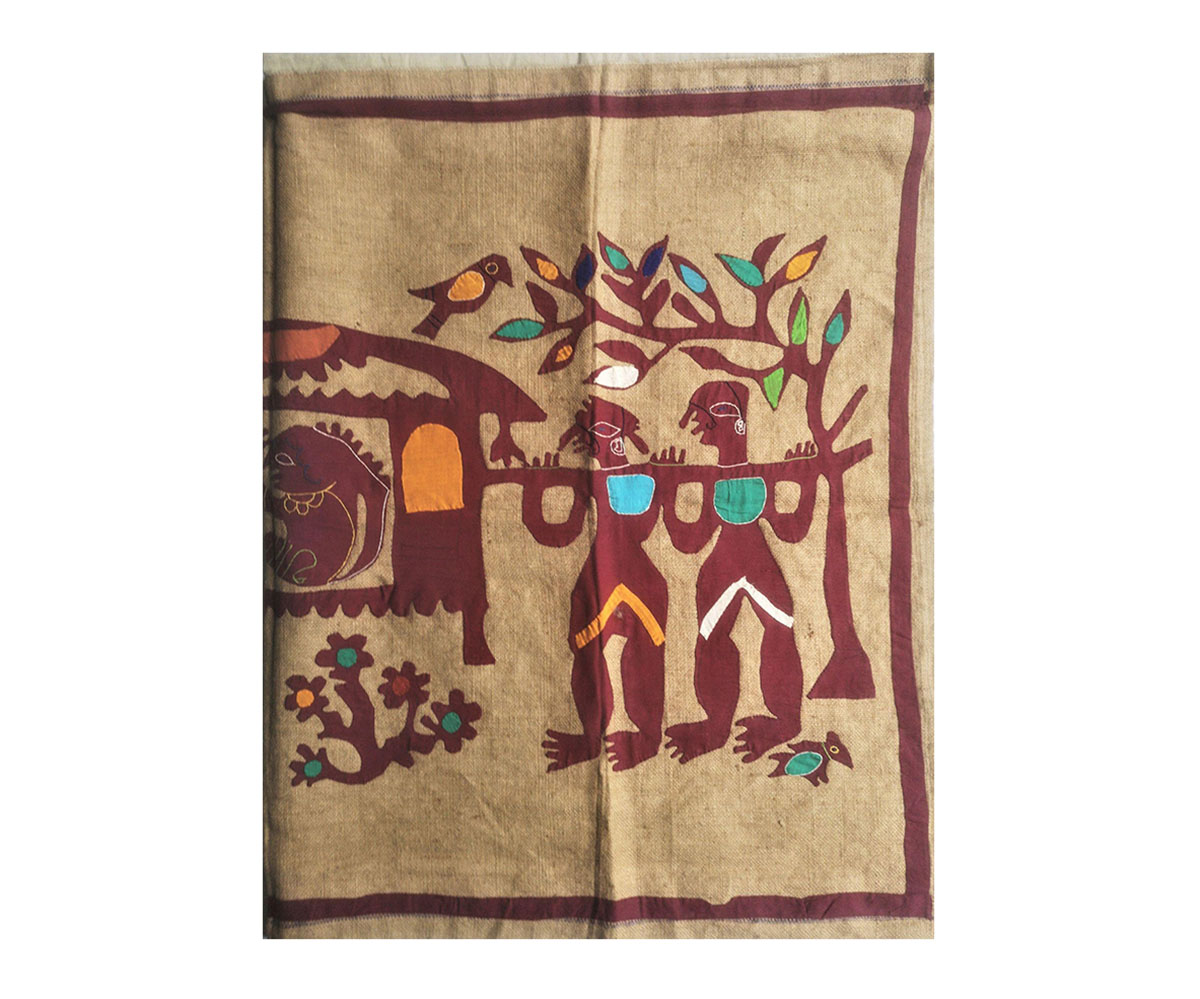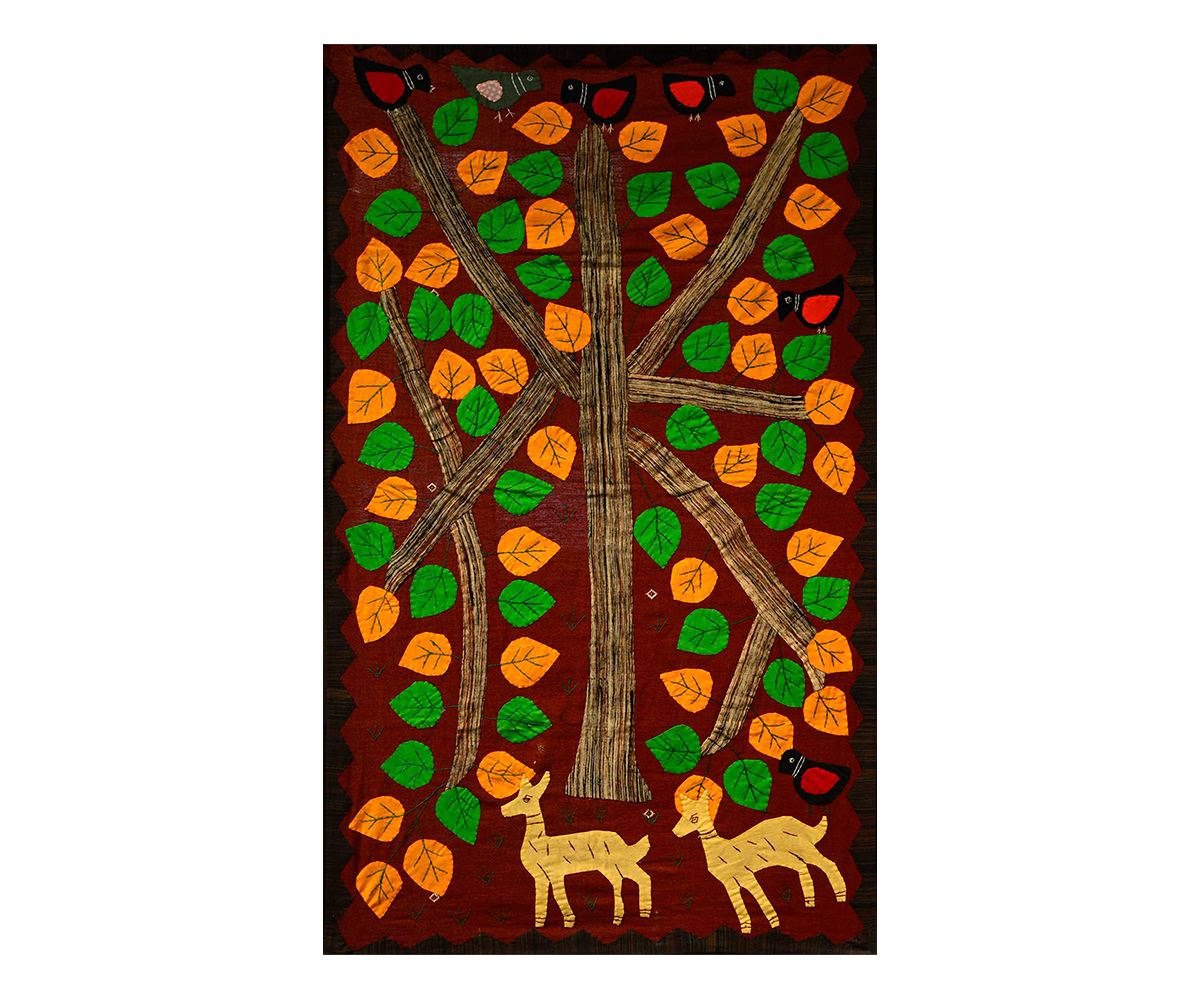ARTICLE
Khatwa Appliqué
An applique tradition from Bihar and Jharkhand — particularly the Sitamarhi and Madhubani districts — made by women using recycled or waste fabric is called khatwa.
To make khatwa, the intended design is drawn on both the upper layer of cloth and the base fabric, after which the upper layer is cut roughly into the shape of the pattern or motif, leaving a wide margin. This margin is then segmented with cuts, folded down and stitched into the planned shape. In some cases where the design has only two colours, the upper layer is strategically cut and stitched down to reveal the patterns and motifs through the contrasting colour of the base fabric. Embroidery with a silk thread, in the form of running stitch and chain stitch, features prominently in the appliqued designs. The waste cloth may also be naturally dyed before being used for applique, and while a wide range of colours is used, the preferred palette for khatwa today are earth tones and muted.
The art form went into decline during British rule and was revived in the 1970s through non-profit organisations, such as Ford Foundation, and support of fashion designers like Anavila Misra. Present-day khatwa depicts the daily life and rural surroundings of the artisans and in some cases also includes illustrations depicting social issues — women’s rights and the spread of AIDS — often composed into a narrative. In addition to sarees and blouses, khatwa textiles today include household furnishings like cushion covers and wall hangings. These textiles received a Geographical Indication (GI) certificate in 2015, ensuring that khatwa artisans continue to sustain an income while preserving the tradition.
Bibliography
Our website is currently undergoing maintenance and re-design, due to which we have had to take down some of our bibliographies. While these will be re-published shortly, you can request references for specific articles by writing to hellomapacademy@map-india.org.




